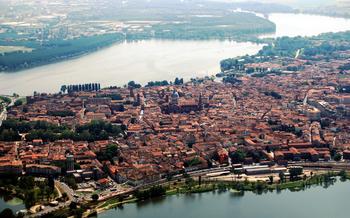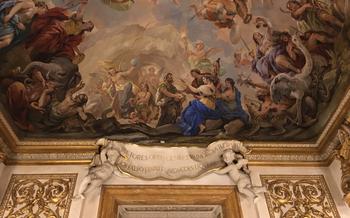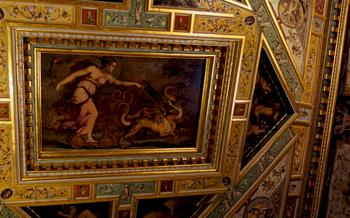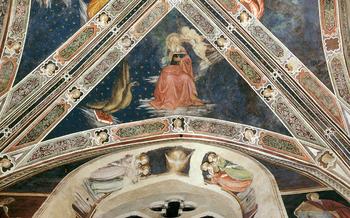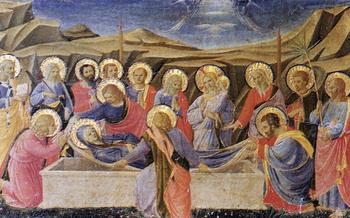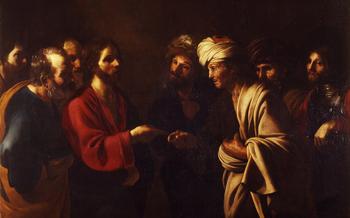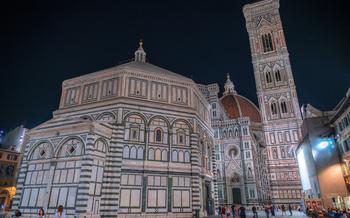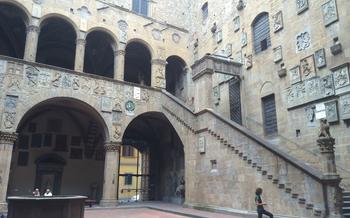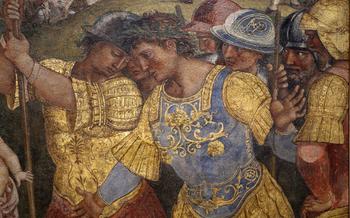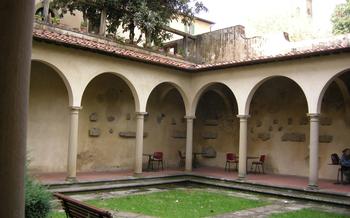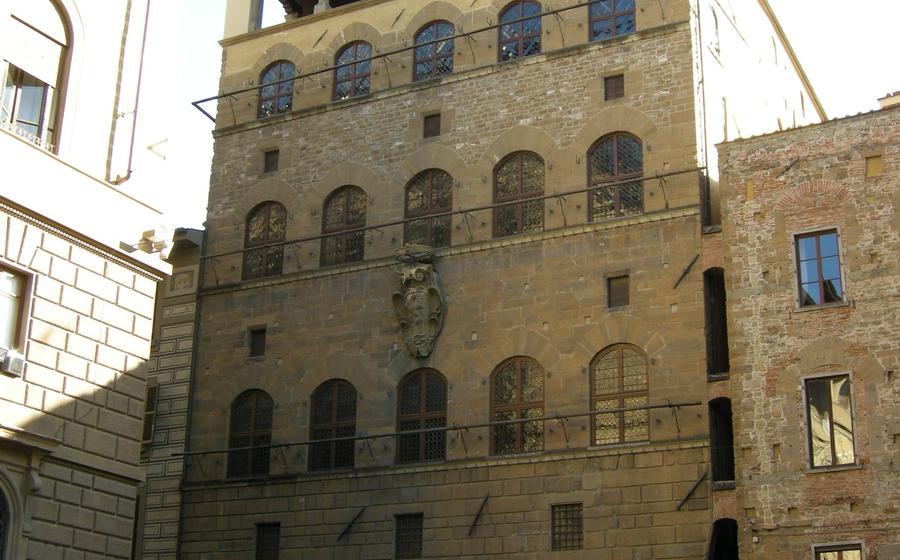
Museo di Palazzo Davanzati
- The Museo di Palazzo Davanzati: A Hidden Gem in Florence
- Historical Context
- The Ground Floor
- The Sala Grande (Main Hall)
- The Sala dei Pappagalli (Parrot Room)
- The Sala della Culla (Cradle Room)
- The Loggia
- The Studiolo
- The Camera da Letto (Bedroom)
- The Chapel: A Sacred Space Within Palazzo Davanzati
- The Terrace: A Panoramic View of Florence
- Insider Tip:
The Museo di Palazzo Davanzati: A Hidden Gem in Florence
In the heart of Florence, a city renowned for its art and history, lies a hidden gem—the Museo di Palazzo Davanzati. This captivating museum invites visitors to step back in time and experience the grandeur of a 14th-century Florentine palace. Once home to the wealthy Davanzati family, the Palazzo Davanzati showcases an exceptional collection of original furnishings, artwork, and artifacts, offering a glimpse into the domestic life and social customs of Florence's golden age. Prepare to be transported to another era as you explore the museum's meticulously preserved rooms, each revealing the intricate details and craftsmanship of a bygone era.
Historical Context
The Davanzati family played a prominent role in Florence's political and economic landscape throughout the Middle Ages and the Renaissance. They were merchants, bankers, and politicians who actively participated in the city's governance and contributed to its prosperity. The construction of Palazzo Davanzati in the 14th century reflects their wealth and status. The palace showcases the architectural style prevalent in Florence during that period, characterized by its imposing stone facade, arched windows, and a central courtyard. The Davanzati family's involvement in the city's political and economic affairs allowed them to amass a significant fortune, which they invested in the construction of their grand residence. Palazzo Davanzati stands as a testament to their power and influence in 14th-century Florence.
The Ground Floor
The ground floor of Palazzo Davanzati offers a glimpse into the domestic life of a wealthy Florentine family in the 14th century. The kitchen, with its original fireplace and cooking utensils, is a reminder of the importance of food and hospitality in medieval Florence. The dining room, featuring a long table, chairs, and tableware from the same period, evokes the social gatherings and celebrations that took place within these walls.
The ground floor also includes a pantry, where food was stored and prepared, and a well, which provided fresh water for the household. These spaces illustrate the practical aspects of daily life in a medieval palace, showcasing the ingenuity and resourcefulness of the Davanzati family in managing their home and entertaining their guests.
The Sala Grande (Main Hall)
The Sala Grande, or Main Hall, was the most important room in Palazzo Davanzati. It served as a reception and entertainment space for the family and their guests. The room's grand dimensions and elaborate decorations reflect its significance.
The Sala Grande is adorned with stunning frescoes that cover the walls and ceiling. The frescoes depict scenes from the Bible, mythology, and history, as well as portraits of the Davanzati family. The ceiling frescoes are particularly impressive, featuring intricate designs and vibrant colors.
The room also boasts a magnificent collection of furniture from the 14th century. The chairs, tables, and cabinets are made of fine wood and are decorated with intricate carvings and inlays. The room's centerpiece is a large, ornate fireplace that would have been used for both cooking and heating.
The Sala Grande is a testament to the wealth and power of the Davanzati family. It is a room that was designed to impress visitors and to provide a comfortable and luxurious space for entertaining.
The Sala dei Pappagalli (Parrot Room)
Among the opulent rooms of the Museo di Palazzo Davanzati, the Sala dei Pappagalli stands out for its vibrant and whimsical charm. Its name, meaning "Parrot Room," derives from the numerous frescoes adorning its walls, depicting parrots and other exotic birds amidst a lush and colorful backdrop. These vibrant frescoes, attributed to the Florentine painter Niccolò di Pietro Gerini, infuse the room with a sense of nature and wonder.
The frescoes, painted in the early 15th century, showcase a variety of parrots, each rendered with remarkable detail and accuracy. They perch on branches, flutter in flight, or playfully interact with each other, creating a lively and captivating scene. The intricate floral motifs and landscape elements further enhance the room's charm, transporting visitors to a tranquil and inviting oasis.
The Sala dei Pappagalli also boasts a collection of antique furniture and objects that complement the room's unique character. A finely carved wooden chest, adorned with intricate geometric patterns and metal embellishments, stands testament to the craftsmanship of the era. Ceramic vases, with their delicate shapes and vibrant hues, add a touch of elegance and warmth to the space.
The room's overall ambiance evokes a sense of serenity and tranquility, inviting visitors to linger and admire its beauty. Whether viewed from afar or up close, the Sala dei Pappagalli offers a glimpse into the exquisite taste and refined lifestyle of the Davanzati family, who cherished art, nature, and the finer things in life.
The Sala della Culla (Cradle Room)
The Sala della Culla, also known as the Cradle Room, holds special significance as a nursery within the Palazzo Davanzati. The focal point of the room is an elaborately carved wooden cradle, a symbol of the importance placed on childbirth and child-rearing in 14th-century Florence. The cradle's intricate design and rich ornamentation reflect the wealth and status of the Davanzati family and their commitment to providing a nurturing environment for their children.
In addition to the cradle, the room features other furnishings and objects related to childcare, such as a changing table, a washbasin, and a collection of toys. These items offer a glimpse into the daily lives of the Davanzati children and the care they received.
The Cradle Room also serves as a reminder of the cultural and social customs surrounding childbirth and child-rearing in Florence during the 14th century. The high infant mortality rate of the time meant that the birth of a healthy child was a cause for great celebration and thanksgiving. Children were regarded as precious gifts, and their well-being was of utmost importance to their families.
By visiting the Cradle Room, visitors to the Museo di Palazzo Davanzati gain an understanding of the significance of family, continuity, and the value placed on the next generation in 14th-century Florence.
The Loggia
The loggia is a stunning architectural feature of Palazzo Davanzati. It is located on the ground floor and directly overlooks the courtyard. The loggia's design is elegant and airy, with a series of slender columns supporting delicate arches. The result is a space that feels both open and inviting.
Originally, the loggia was a place where the Davanzati family could relax, socialize, and enjoy the fresh air. It would have been a particularly pleasant place to spend time during the summer months when Florence's weather is warm and sunny. The loggia also offered beautiful views of the city, as it is located on the south side of the palazzo and faces towards the Arno River.
Today, the loggia is one of the highlights of the Museo di Palazzo Davanzati. Visitors can stroll through the loggia, admire its architectural features, and take in the views of Florence. It is a lovely spot to sit and relax for a few moments while exploring the museum.
The Studiolo
The studiolo, or study, was a private retreat for the head of the Davanzati family, where he could engage in scholarly pursuits and contemplation. This small but significant room is adorned with exquisite frescoes by Gherardo Starnina, depicting scenes from the Bible and classical literature. The walls are lined with bookshelves filled with precious manuscripts and scientific instruments, reflecting the intellectual interests of the Davanzati family. The studiolo serves as a testament to the importance of education and knowledge during the Italian Renaissance.
The Camera da Letto (Bedroom)
The camera da letto, or bedroom, is a testament to the Davanzati family's wealth and status. The room's furnishings and decorative elements reflect the family's refined taste and appreciation for luxury. The bed, the most prominent piece of furniture in the room, is adorned with intricate carvings and a soft, velvet canopy. The wardrobe, with its rich, dark wood and ornate handles, provides ample storage space for the family's extensive wardrobe. Tapestries with vibrant colors and intricate designs adorn the walls, adding warmth and elegance to the space. The ceiling is adorned with delicate frescoes depicting scenes from mythology and nature, creating a serene and inviting atmosphere. Overall, the bedroom offers a glimpse into the private lives of the Davanzati family, showcasing their love for comfort, luxury, and beauty.
The Chapel: A Sacred Space Within Palazzo Davanzati
Nestled within the heart of Palazzo Davanzati lies a serene and sacred space – the chapel. This intimate room served as a place of worship and devotion for the Davanzati family, reflecting their deep religious beliefs and the importance of spirituality in their lives.
The chapel's architectural features exude an aura of reverence. Its vaulted ceiling, adorned with intricate frescoes, creates a sense of awe and wonder. The walls are adorned with religious iconography and symbolism, each brushstroke telling a story from the Bible or the lives of the saints.
Among the chapel's most striking features is the fresco depicting the "Adoration of the Magi." This masterpiece showcases the family's devotion to the Three Wise Men, who traveled from afar to pay homage to the newborn Jesus. The attention to detail and the vibrant colors bring the biblical scene to life, inviting visitors to contemplate the significance of this sacred event.
Other frescoes within the chapel depict scenes from the life of Christ, such as the Crucifixion and the Resurrection. These artworks serve as a reminder of the family's faith and their belief in the power of divine redemption.
The chapel also houses a collection of religious artifacts, including a wooden crucifix, a chalice, and a set of candlesticks. These objects, once used for private devotions and family rituals, add to the chapel's spiritual atmosphere and provide a glimpse into the religious practices of the Davanzati household.
Visiting the chapel within Palazzo Davanzati is a unique opportunity to experience the sacred and private sphere of a wealthy Florentine family during the 14th century. This intimate space offers a glimpse into their spiritual beliefs and the deep connection they felt with their faith.
The Terrace: A Panoramic View of Florence
The Museo di Palazzo Davanzati's terrace offers breathtaking panoramic views of Florence. Ascend the stairs to this elevated vantage point and be greeted by a picturesque tableau of the city's iconic landmarks. Gaze upon the terracotta-tiled rooftops, the soaring bell towers, and the majestic Duomo, its dome dominating the skyline. The panoramic vista extends beyond the city limits, allowing you to admire the verdant hills and the meandering Arno River, adding depth and dimension to the breathtaking scenery.
Whether you choose to visit during the golden hour of sunset, when the city is bathed in a warm, ethereal glow, or at dawn, when the rising sun casts long shadows across the cityscape, the terrace of the Museo di Palazzo Davanzati offers an unforgettable experience. Capture the beauty of Florence from this elevated perspective and create lasting memories of your visit to this enchanting city.
Insider Tip:
For an immersive and tranquil experience, plan your visit to the Museo di Palazzo Davanzati during the off-season or on a weekday. Not only will you encounter fewer crowds, but you'll also have the opportunity to fully appreciate the museum's unique atmosphere and intricate details without distractions. This is particularly advantageous if you wish to delve deeply into the history and stories embedded within each room, taking your time to capture the essence of life in 14th-century Florence.
